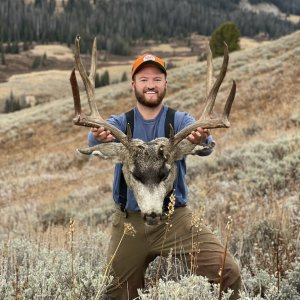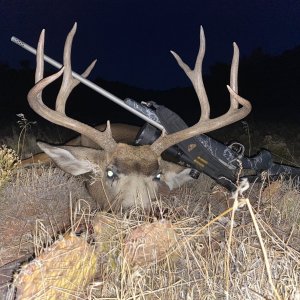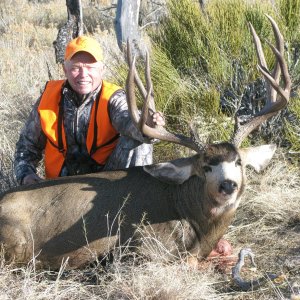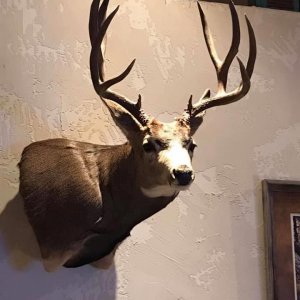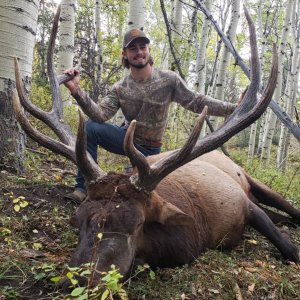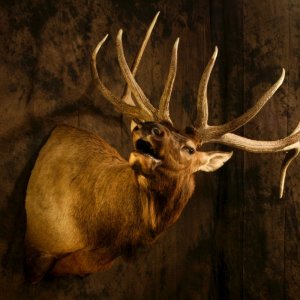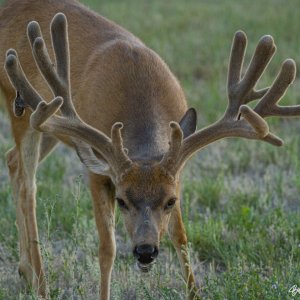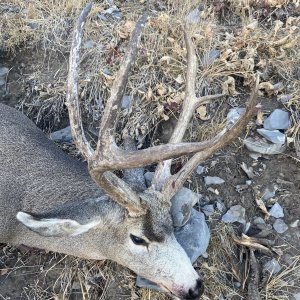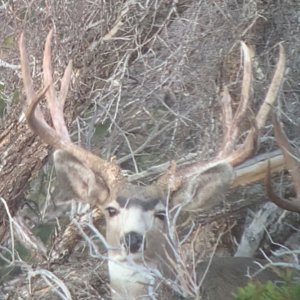Hiker of the Woods
Active Member
- Messages
- 623
This might help explain a little on why and how the wolf introduction has happened here in the lower 48. I'm sure you can find other great information on the USFWS website. Here are a few paragraphs from a great book on wolves.
Quote from book:
Mech, D.L. and Boitani, Luigi. 2003. Wolves. Behavior, Ecology, and Conservation.
(Pages 222-224)
?The biological species concept (BSC) maintains that the unifying characteristic of species is reproductive independence or isolation from other species (Mayr 1963; O?Brien and Mayr 1991). However, reproductive isolation is difficult to assess for populations living in different areas, and hybrid zones may form between populations thought to represent distinct species. These problems with the BSC have been the subject of a long discussion (reviewed by Hull 1997).
Operationally, species are often defined as morphologically and behaviorally distinct entities (e.g., Nowak 1979); however, the level of morphological distinction separating various taxonomic units (species, subspecies, populations) may be somewhat arbitrary and dependent on the measurements taken by the researcher. Moreover, morphologically distinct populations may interbreed (reviewed by Barton and Hewitt 1985, Harrison 1990, and Arnold 1997). Consequently, purportedly more objective definitions have been developed, such as the phylogenetic species concept, which defines species according to ?diagnosable? characteristics reflecting a common ancestry (e.g., McKitrick and Zink 1988; Vogler et al. 1993).
Combining elements of the biological and phylogenetic species concepts, Avise and Ball (1990) suggested the subspecies be defined as populations that are generally allopatric (live in different areas) and have a series of concordantly divergent traits, but may interbreed if barriers to dispersal are removed. In contrast, species are defined by a similar suite of concordantly divergent traits, but do not widely interbreed if barriers to dispersal are removed.
Two problems are apparent when applying these definitions to wolflike canids. The first is that wolves disperse over great distances and across topographic barriers to find mates and territories (see Mech and Boitani, chap. 1 in this volume). As a result, rates of gene flow are high, so wolf populations are rarely isolated long enough to produce reciprocal monophyly in their mitochondrial sequences. Even rapidly evolving microsatellite loci may not show much differentiation between populations. Rather than populations being discrete, a limited pattern of genetic differentiation with distance may be apparent (Forbes and Boyd 1996; see below).
For this reason, the division of wolves into discrete subspecies and other genetic units may be somewhat arbitrary and overly typological (conforming to a specific ideal type). In reality, wolves are better viewed as a series of intergrading populations having subtle or undetectable patterns of clinal genetic change (Lehman et at. 1991; Roy, Geffen et al. 1994; Forbes and Boyd 1997). Importantly, populations may differ in attributes important to fitness in spite of being connected by high rates of gene flow (e.g., T.B. Smith et al. 1997). Therefore, units for conservation should be based on fitness-related characters or their surrogates, rather than on largely neutral changes in mitochondrial or microsatellite loci (Candall et at. 2000).
A second problem stemming from high rates of gene flow concerns the importance of hybridization. The width of a hybrid zone reflects dispersal distance and the degree of selection against hybrids (Barton and Hewitt 1985). Therefore, if selection against hybrids is weak and dispersal distances are large, interspecific hybridization can affect the genetic composition of a population over a wide geographic area. As discussed below, independent genetic studies suggest hybridization between coyotes and wolves and their hybrids over a wide area in southeastern Canada. As a consequence of hybridization, physically distinct populations may actually represent hybrids containing various proportions of genes from otherwise distinct species (see Figure 8.2 below on page 224). The presence of such introgressed populations greatly confounds taxonomic and conservation efforts (Jenks and Wayne 1992; Wayne and Brown 2001, 145-62).?
I would highly recommend reading through chapter 9 ?Wolf Evolution and Taxonomy?. Figure 9.2 has a great map of original geographic distribution of wolves in North America. Take a look at that map and put the few paragraphs with it from up above and that might help explain why and how the re-introduction of wolves has happened here in the lower 48.
Quote from book:
Mech, D.L. and Boitani, Luigi. 2003. Wolves. Behavior, Ecology, and Conservation.
(Pages 222-224)
?The biological species concept (BSC) maintains that the unifying characteristic of species is reproductive independence or isolation from other species (Mayr 1963; O?Brien and Mayr 1991). However, reproductive isolation is difficult to assess for populations living in different areas, and hybrid zones may form between populations thought to represent distinct species. These problems with the BSC have been the subject of a long discussion (reviewed by Hull 1997).
Operationally, species are often defined as morphologically and behaviorally distinct entities (e.g., Nowak 1979); however, the level of morphological distinction separating various taxonomic units (species, subspecies, populations) may be somewhat arbitrary and dependent on the measurements taken by the researcher. Moreover, morphologically distinct populations may interbreed (reviewed by Barton and Hewitt 1985, Harrison 1990, and Arnold 1997). Consequently, purportedly more objective definitions have been developed, such as the phylogenetic species concept, which defines species according to ?diagnosable? characteristics reflecting a common ancestry (e.g., McKitrick and Zink 1988; Vogler et al. 1993).
Combining elements of the biological and phylogenetic species concepts, Avise and Ball (1990) suggested the subspecies be defined as populations that are generally allopatric (live in different areas) and have a series of concordantly divergent traits, but may interbreed if barriers to dispersal are removed. In contrast, species are defined by a similar suite of concordantly divergent traits, but do not widely interbreed if barriers to dispersal are removed.
Two problems are apparent when applying these definitions to wolflike canids. The first is that wolves disperse over great distances and across topographic barriers to find mates and territories (see Mech and Boitani, chap. 1 in this volume). As a result, rates of gene flow are high, so wolf populations are rarely isolated long enough to produce reciprocal monophyly in their mitochondrial sequences. Even rapidly evolving microsatellite loci may not show much differentiation between populations. Rather than populations being discrete, a limited pattern of genetic differentiation with distance may be apparent (Forbes and Boyd 1996; see below).
For this reason, the division of wolves into discrete subspecies and other genetic units may be somewhat arbitrary and overly typological (conforming to a specific ideal type). In reality, wolves are better viewed as a series of intergrading populations having subtle or undetectable patterns of clinal genetic change (Lehman et at. 1991; Roy, Geffen et al. 1994; Forbes and Boyd 1997). Importantly, populations may differ in attributes important to fitness in spite of being connected by high rates of gene flow (e.g., T.B. Smith et al. 1997). Therefore, units for conservation should be based on fitness-related characters or their surrogates, rather than on largely neutral changes in mitochondrial or microsatellite loci (Candall et at. 2000).
A second problem stemming from high rates of gene flow concerns the importance of hybridization. The width of a hybrid zone reflects dispersal distance and the degree of selection against hybrids (Barton and Hewitt 1985). Therefore, if selection against hybrids is weak and dispersal distances are large, interspecific hybridization can affect the genetic composition of a population over a wide geographic area. As discussed below, independent genetic studies suggest hybridization between coyotes and wolves and their hybrids over a wide area in southeastern Canada. As a consequence of hybridization, physically distinct populations may actually represent hybrids containing various proportions of genes from otherwise distinct species (see Figure 8.2 below on page 224). The presence of such introgressed populations greatly confounds taxonomic and conservation efforts (Jenks and Wayne 1992; Wayne and Brown 2001, 145-62).?
I would highly recommend reading through chapter 9 ?Wolf Evolution and Taxonomy?. Figure 9.2 has a great map of original geographic distribution of wolves in North America. Take a look at that map and put the few paragraphs with it from up above and that might help explain why and how the re-introduction of wolves has happened here in the lower 48.

